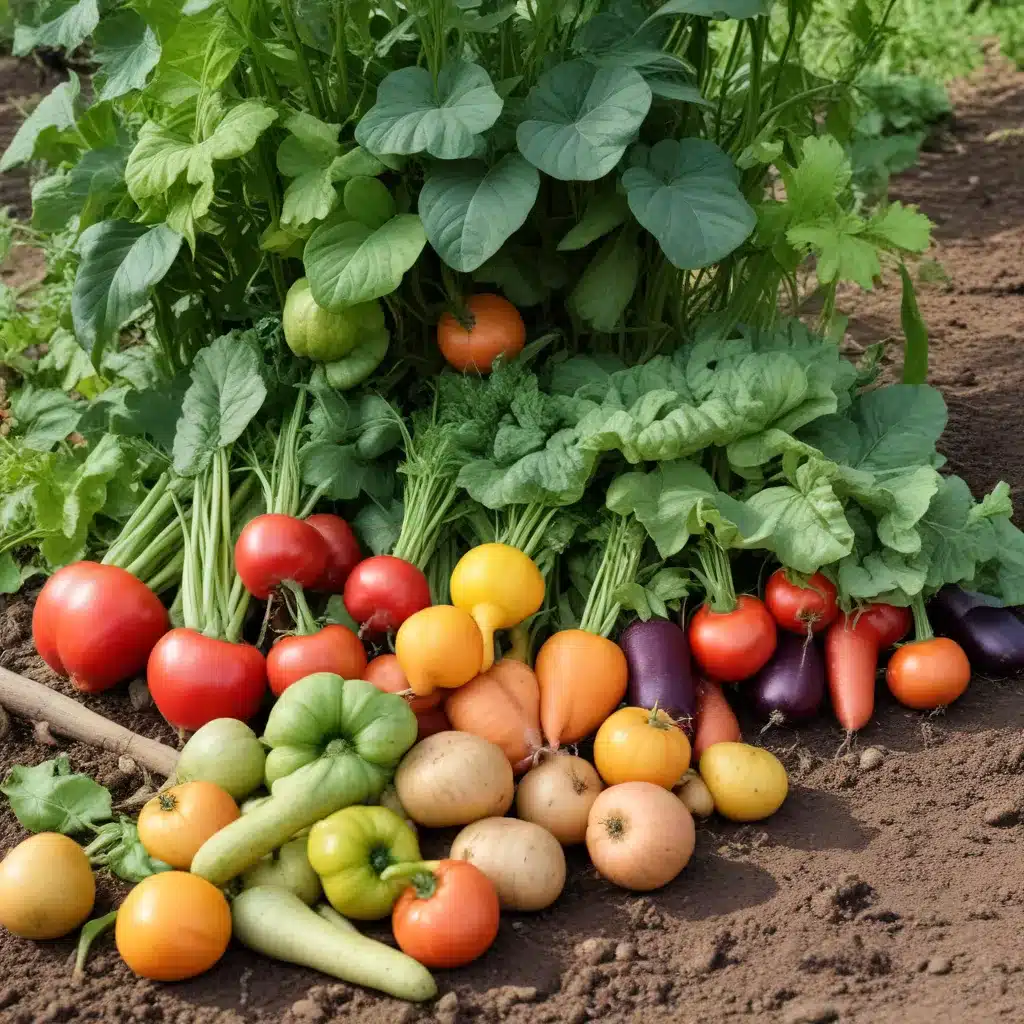
Here at Crooked Pines Farm, we take great pride in our heirloom vegetable offerings. While modern hybrid varieties may boast improved shelf life and disease resistance, heirloom produce offers an unparalleled depth of flavor, nutritional value, and genetic diversity that makes them a true delight to grow and savor. By cultivating these unique and historic plant varieties, we can preserve cherished food traditions and share the magic of exceptional homegrown produce with our community.
The Benefits of Heirloom Vegetables
Heirloom vegetables are not merely curiosities from the past—they offer tangible advantages that make them well worth growing. First and foremost, heirlooms are prized for their exceptional flavor profiles. Developed through generations of selective breeding, these varieties have been optimized for incredible taste rather than long-distance shipping or uniform appearance. When you bite into a Brandywine tomato or savor the earthy sweetness of a Purple Dragon carrot, you’ll understand why heirlooms have earned their devoted following.
Beyond flavor, heirlooms also boast superior nutritional value. Many older vegetable varieties contain higher concentrations of essential vitamins, minerals, and antioxidants compared to modern hybrids bred for high yields and cosmetic appeal. By growing and consuming heirlooms, you can ensure your family enjoys the full nutritional benefits of your homegrown harvest.
Finally, the genetic diversity represented by heirloom vegetables is a precious resource worth preserving. As industrial agriculture has prioritized a narrow selection of uniform, high-yielding crops, countless unique plant varieties have fallen by the wayside. Heirloom gardening helps maintain this irreplaceable biodiversity, safeguarding the building blocks for future food security and climate resilience.
Exploring the Origins of Heirloom Varieties
The roots of heirloom vegetables stretch back hundreds, even thousands, of years. In the days before industrialized agriculture, communities around the world carefully cultivated distinct local vegetable varieties, saving and sharing seeds from generation to generation. These traditional cultivation practices allowed unique genetic traits to emerge and spread, resulting in the incredible diversity we see in heirlooms today.
Many heirloom varieties can be traced back to specific geographic regions, indigenous cultures, or even individual family lineages. The Seneca Cornfield Bean, for instance, was likely grown by the Tutelo tribes of my local area, while the Brandywine tomato is said to have originated with the Amish community in Pennsylvania. By growing and preserving these storied varieties, we honor the legacies of the skilled farmers and gardeners who came before us.
Of course, seed saving has been a crucial practice in the continued survival of heirloom plants. Unlike modern hybrids, heirlooms reliably “breed true”, meaning their seeds will produce plants nearly identical to the parent. Careful isolation and selection of the best specimens for seed-saving has allowed heirlooms to maintain their unique traits over time. Mastering these traditional techniques is an essential skill for any heirloom gardener.
Establishing an Heirloom Vegetable Garden
If you’re ready to dive into the world of heirloom gardening, the first step is finding the right growing spot. Site selection is crucial—heirlooms thrive in nutrient-rich, well-draining soil and require ample sunlight exposure. Consider the unique microclimates on your property and choose a location that will allow your plants to truly shine.
When it comes to sourcing heirloom seeds, you have a wealth of options. Many specialty seed catalogs and online retailers offer a diverse selection of rare and historic varieties. Local seed swaps, farm stands, and gardening clubs can also be excellent sources, allowing you to connect with fellow enthusiasts and discover regional heirlooms. And of course, saving seeds from your own successful harvests is a rewarding way to grow your heirloom collection over time.
Once you’ve amassed your seed stash, it’s time to get planting! Heirloom crops may require slightly different sowing techniques and cultivation practices compared to hybrids. Pay close attention to recommendations regarding spacing, companion planting, and organic pest management. With a little extra care and attention, your heirloom garden will thrive.
Preserving the Harvest—and the Future
Heirloom gardening is more than just a seasonal endeavor—it’s a means of preserving our precious food heritage for years to come. Proper harvesting and handling techniques are crucial to ensure your heirloom produce retains its exceptional qualities. Learn the signs of ripeness for each variety, and handle your harvests with great care to prevent bruising or damage.
Of course, no heirloom gardener’s journey is complete without seed saving. By carefully selecting, drying, and storing the seeds from your most successful plants, you can ensure your favorite varieties continue to grace your garden for generations. Proper isolation and selection techniques will help maintain the genetic integrity of your heirlooms, while sharing your saved seeds with others helps spread these invaluable resources.
Culinary Delights from the Heirloom Patch
One of the true joys of heirloom gardening is the sheer diversity of flavors and textures you’ll discover. Each variety offers a unique taste profile, from the sweet-tart balance of Brandywine tomatoes to the earthy richness of Lacinato kale. Heirlooms make stunning additions to salads, sides, and main dishes, lending depth and complexity to every bite.
Beyond simply enjoying your heirloom harvest fresh, you can also explore the world of food preservation. Heirlooms’ superior shelf life lends itself beautifully to canning, pickling, and other traditional methods. Homemade heirloom tomato sauce, zesty pickled peppers, or fragrant dried herbs can bring a taste of your garden to the table long after the season has passed.
Whether you’re a seasoned heirloom enthusiast or just beginning your journey, I encourage you to explore the incredible bounty of these historic vegetable varieties. By cultivating, preserving, and sharing the unique gifts of heirloom produce, we can ensure that the rich tapestry of our food heritage continues to thrive for generations to come. Happy gardening!


